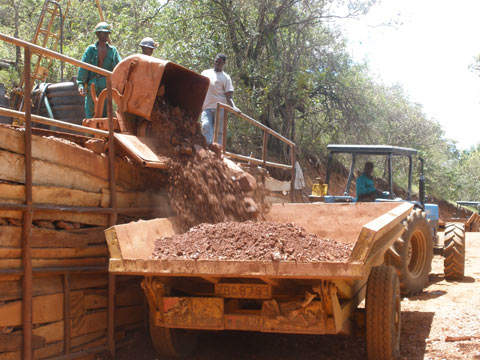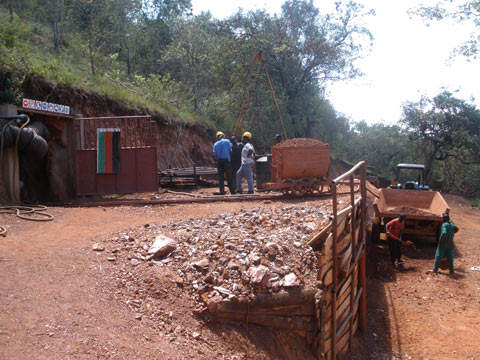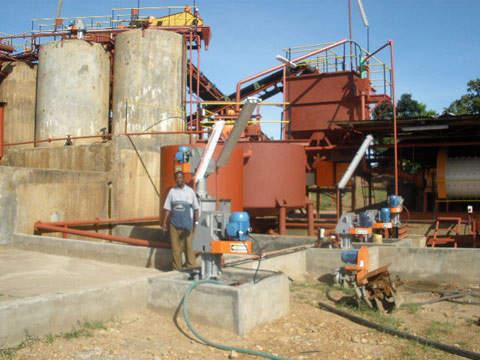The Kilimapesa Gold mine project is a joint venture between Goldplat and International Gold Exploration, situated in the Migori Archaean Greenstone Belt in south-west Kenya. The project came into production in January 2009.
The company has applied for a license application to the Commissioner of Mines and Geology and has submitted an environmental impact assessment to the Kenya Environmental Agency.
Goldplat acquired a 100% interest in the mine in September 2009. The company signed the purchase agreement with its joint venture partner in June 2009 to acquire a 50% interest in the project. Goldplat acquired the stake through its wholly owned subsidiary, Gold Mineral Resources, for $2.7m.
Goldplat will take up commercial mining operations once the exploration licence is permitted to be converted into a mining licence. The request is currently pending with the Kenyan Government.
Plant refurbishment programme
Goldplat invested $500,000 in a plant refurbishment programme which was completed in two phases:
- Phase I focused on the evaluation of ten key targets within the license area, including sampling within existing adits developed in the 1980s, undertaking IP programmes and shallow auger drilling of historic tailings.
- Phase II developed 400m of underground tunnels to enhance the exposure of two identified gold bearing quartz veins at Kilimapesa Hill.
The total strike length was extended to 93m in September 2008. The strike reached an average of 6.9g/t over a stope width of 1.27m and contained a 42m stretch grading 10.13 g/t gold over 1.4m.
Mining activities
Goldplat adopted the strategy of developing the ore body for the first year and managing the cost from the development ore. This resulted in increased efficiencies and led to an improvement in the monthly development rate. By the end of March 2009 Goldplat achieved 70m of mine development. The company is aiming to reach at 100m a month with an expected 500m of vein strike length, and more than 500m of raises being available by the end of 2009.
As of January 2009, the underground development continues to extend the strike of the south vein. The sampling indicated an average value of 6.33 g/t gold over a strike of 129m with a stope width of 123cm.
The mine has milled around 400t of development ore with thickener grades between 3 and 5 g/t gold with the concentrate value up to 1,000 g/t Au and carbon loading between 2,000 and 5,000 g/t Au.
Goldplat is looking to raise production to 900t per month out of which 750 will be from underground development and the rest from high-grade tailings. It is expected that the average rate will be in excess of 4g/t Au yielding between 4kg (124oz) and 6kg (187oz) Au per month.
The blending of high-grade tailings has been initiated and the first shipment of concentrate and gold loaded carbon is ready for export to a refinery in South Africa.
On-reef development programme
The company is engaged in a development programme to enable bulk sampling in adit. The development focuses on the extension east and west of the existing on-the-reef drives, located on the South Vein, along with development of the northerly extension of the adit, to intersect the parallel vein to the North Vein. With the intersection of the North Vein, drives were developed east and west to prove its strike extent. Later, the development focused on continued extension of all four drives
along with development of possible mineable blocks.
The opening up of an old adit 150m to the east of adit B has improved the understanding of the mine’s geological model. The adit includes over 150m of existing development.
Diamond drilling
The project also saw the start of a diamond drilling programme, consisting of 14 holes for a total drill length of 500m. The holes were designed to intersect the quartz vein 30-40m down-dip from the current on-reef development. The information from the drilling programme along with on-reef development, were modelled in 3D using Datamine Software and used to produce a JORC-compliant ore resource statement.
Goldplat is looking to establish additional gold resources and to upgrade the total resource to be JORC-compliant by the end of 2009.
Artisanal tailings stockpile
Goldplat is also identifying areas through trenching and subsequent diamond drilling with an objective to view high-grade, low tonnage surface mining. It has already identified some areas with high-grade artisanal mining. The stockpiling of artisanal tailings continues in spite of minimal tailings delivery to the plant due to heavy rains in January and February 2009.






